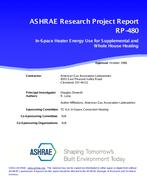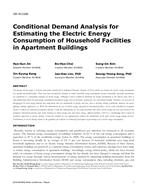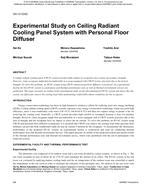Hourly weather data used as the input for building simulation computer models for energy analysis are frequently incomplete, particularly for solar radiation. Solar radiation components – global, diffuse, and direct, and direct – are therefore calculated using various solar radiation models. The objective of this study is to identify the errors in the loads resulting from solar radiation through the windows of two model houses when the solar radiation values are based on calculated results using three different models. The Hastings (1977) ranch has been modified to give a passive solar design and a more conventional design. These two models have been simulated for energy analysis using the DOE 2.1C program. Four hourly weather tapes have been prepared, one with measured solar radiation data, and the other three with calculated solar data based on three solar models. The three solar radiation models were a cloud-layer-based model and two total-cloud-based models. The two total-cloud-based models were available in the DOE 2.1C program and would normally be used if the input weather tape did not include measured solar radiation data. All other weather data on the four weather tapes were actual recorded data. Three outputs of the DOE 2.1C simulation program were used to study the effects of the different solar radiation inputs from the weather tapes. These were the space load resulting from solar gains through the windows and the monthly cooling and heating energy. When the load on the space resulting from solar gains was separated from the total space load, the effect of solar flux variations was clearly identified. When this glass solar load was determined for the house models studied, the mean bias error ranged from +50% to -40% between DOE 2.1C results based on calculated solar input and DOE 2.1C results based on measured solar input. All solar models exhibited a large seasonal variation from the measured values of solar radiation. All three solar models showed large seasonal errors in some or all of the solar components. These errors were reflected in the glass solar load of buildings. Although these results are valid for one site for one year, the errors caused by the use of the solar models are unacceptably high when applied to building energy analysis.
KEYWORDS: solar radiation, data, energy consumption, housing, calculating, accuracy, windows, solar energy, passive, measuring, comparing, computer programs, computers
Citation: ASHRAE Transactions, vol.97, Pt. 1, New York 1991
Product Details
- Published:
- 1991
- Number of Pages:
- 3
- File Size:
- 1 file , 410 KB
- Product Code(s):
- D-18321


